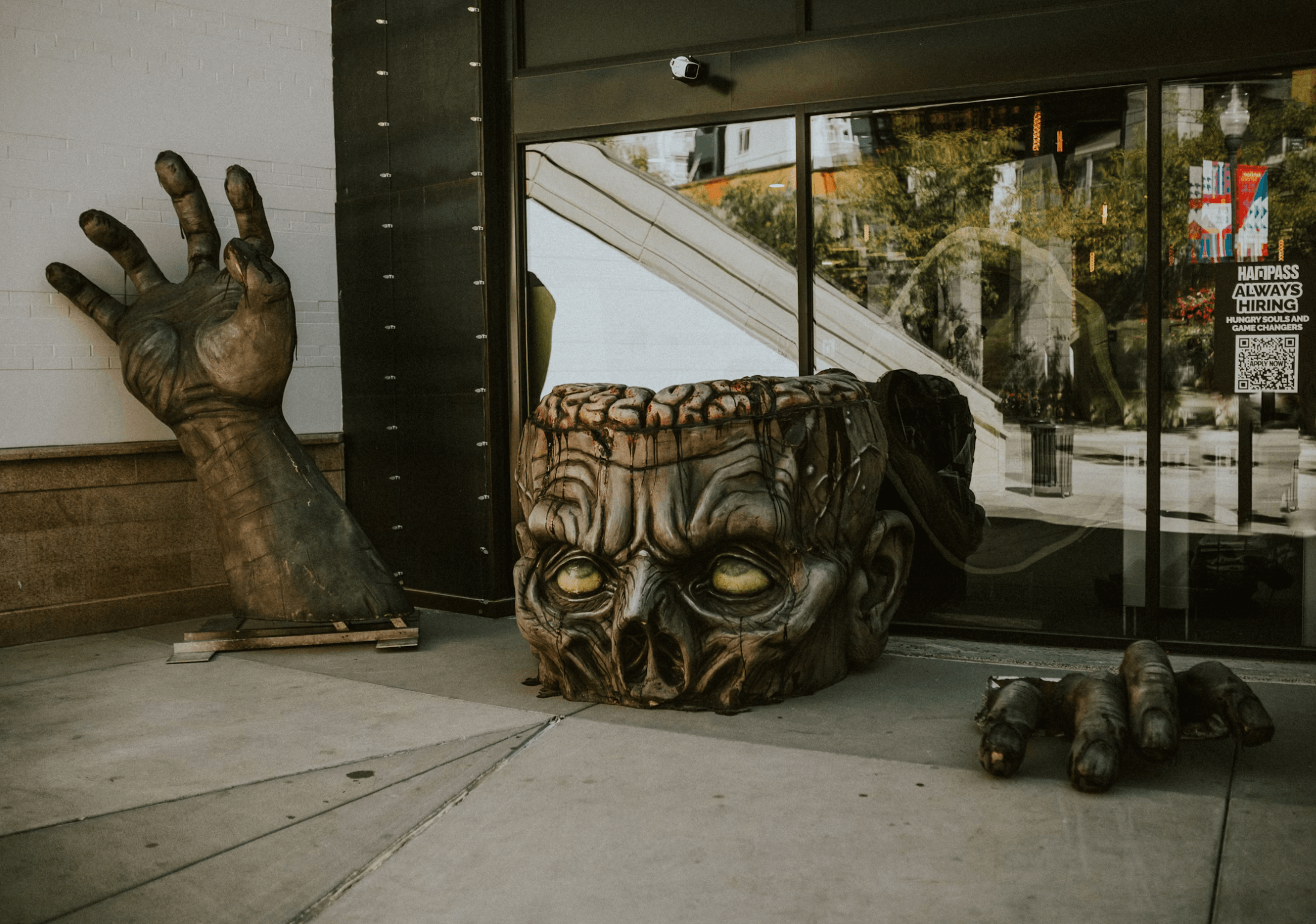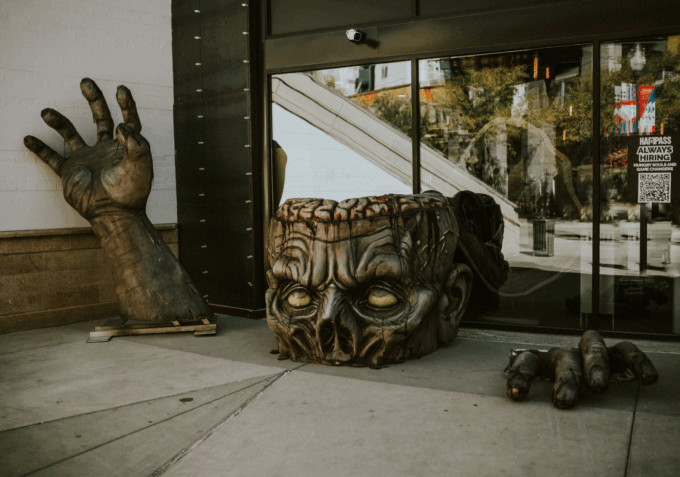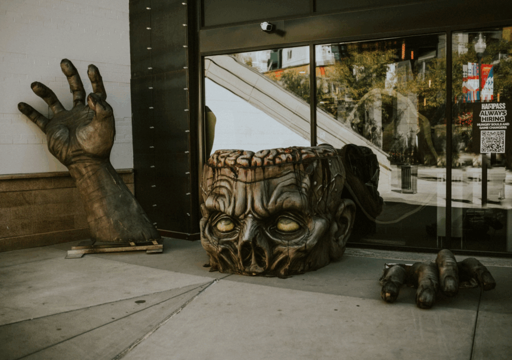

Photo by Caitlyn Wilson
Donald Trump secured the presidency by forging a scary coalition of conservative forces and effectively playing upon many Americans worst fears.
His coalition includes his MAGA base and Christian nationalists; “free market” business opportunists and Silicon Valley billionaires; and “limited” government advocates, be it for domestic programs or foreign involvements.
The most conservative force in Trump’s coalition is known as “paleoconservatism” – aka “paleocons”. They advocate for a strong market economy, a shrunken federal government, restricted immigration and limited foreign involvement (unless it benefits national interests) as well as strong Christian values, the patriarchal family and a white America.
The two most prominent paleocons in the Trump administration are Vice Pres. J.D. Vance, a protégé of venture capitalist Peter Thiel, and Stephen Miller, a radical Zionist who is deputy chief of staff for policy and homeland security who pushes the anti-immigrant program. Other powerful paleos include Michael Anton, deputy secretary of state; and Michael Waltz, national security advisor.
From the Grave
Today’s paleos trace their philosophic roots back to the British conservative thinker, Edmund Burke. He argued for the preservation of tradition as a source of societal stability and wisdom, and strongly opposed the French Revolution which he saw as destructive of an organic and constitutional society.
They also draw on what they claim as the anti-federalist theories of pro-slavers Thomas Jefferson and John C. Calhoun.
Equally critically, they embraced the economic theory of James Burnham, a former Trotskyist, who authored The Managerial Revolution (1941), who warned that traditional capitalism – as well as communism — was being replaced by a new economic system he called “managerialism,” rule by managers.
The paleos were a radical but minority force within the overall Republican conservative sphere for much of the 20th century. Often dubbed “Old Right Republicans,” they opposed Pres. Woodrow Wilson’s efforts to have the U.S. join the League of Nations; strongly supported the 1924 Immigration Act that excluded Asians so as to preserve U.S. homogeneity; bitterly opposed Pres. Franklin D. Roosevelt and the New Deal; and were fervent anticommunists during the postwar. However, the Eisenhower, Truman and Kennedy administrations contained the conservative agenda.
The tumultuous 1960s, with its civil-rights movement, anti-war activism and countercultural of drug, sex and rock-&-roll, provoked a strong conservative reaction. In the wake of Barry Goldwater’s landslide defeat in 1964, conservativism began to find new voices. The right was split between what was identified as the “New Right” or “neocons” (represented by William F. Buckley, publisher of National Review), “libertarians” (represented by Ayn Rand, author of Atlas Shrugged) and “Old Right” or paleocons (represented by Pat Buchanan, an assistant to presidents Nixon, Ford and Reagan).
Attack, Attack, Attack
The culture wars were (unofficially) launched in August 1971 when Lewis Powell, a Virginia attorney, tobacco-industry lobbyist and future Supreme Court Judge, released a secret report for the Chamber of Commerce entitled, “Attack on the American Free Enterprise System.”
His advice to the business community was simple:
Business must learn the lesson . . . that political power is necessary; that such power must be assiduously cultivated; and that when necessary, it must be used aggressively and with determination—without embarrassment and without the reluctance which has been so characteristic of American business.
He took special care to note:
There should be no hesitation to attack the [Ralph] Naders, the [Herbert] Marcuses and others who openly seek destruction of the system. There should not be the slightest hesitation to press vigorously in all political arenas for support of the enterprise system. Nor should there be reluctance to penalize politically those who oppose it.
He called for social conservatives to aggressively fight for not only economic power but political power – and they did.
In 1972, Phyllis Schlafly, a conservative lawyer and writer, launched a successful counteroffensive to block the adoption of the Equal Rights Amendment (ERA) that would guarantee women the same rights as men. Schlafly, a devoutly Catholic and rightwing activist, was a militant anticommunist long affiliated with the John Birch Society. Often unappreciated, her “STOP-ERA” campaign became more than a single-issue “war,” more than an effort to block a proposed constitutional amendment.
Influential Americans took Powell’s warning to heart. In February ‘73, three of the nation’s richest conservatives – Joseph Coors, Richard Mellon Scaife and H. L. Hunt — backed Paul Weyrich and the creation of the Heritage Foundation. In May, the National Council of Catholic Bishops spun off its National Right to Life Committee (NRLC) into a separate, activist anti-abortion organization. In September, the American Legislative Exchange Council (ALEC) was founded as the Conservative Caucus of State Legislators. In ’79, the Claremont Institute was established.
None took it more seriously than Ronald Reagan, California governor from 1967 to 1975 and president from 1981 to 1989. His landslide victory over Democratic incumbent president Jimmy Carter in 1980 that transformed America’s political landscape. As Jeffrey Bloodworth argues, “Ronald Reagan brought traditionalists, libertarians, anticommunists, the New Right, and neoconservatives into an enduring coalition.” He also enabled a “new breed of conservative activists to control the GOP and conservatism to become the nation’s majority creed.” However, an ever-growing Old Right Republicans found Reagan conservatism deeply wanting.
Paleo Ideology
In 1988, two conservatives, Thomas Fleming and Paul Gottfried published The Conservative Movement and coined the term “paleoconservative.” In 2008, in the wake of Barack Obama’s presidency, Richard Spencer, an antisemitic neo-Nazi, coined the terms “alternative right” to avoid racist connotation associated with “paleo”; it was rebranded “alt-right.
The paleos got a boost at the 1992 Republican National Convention when Buchanan warned, “There is a religious war going on in our country for the soul of America. It is a cultural war, as critical to the kind of nation we will one day be as was the Cold War itself.”
Going further, Buchanan insisted, “Our resolve is to put America First, to make America First again, and to keep America First.” He then added, “our Western heritage is going to be handed down to future generations, not dumped onto some landfill called multiculturalism.”
Sam Francis, a leading paleo ideologue, gave voice to the Christian right’s white nationalism in a 1995 article for American Renaissance. He wrote:
Whites must formulate a white racial consciousness that identifies racial and biological endowments as important and relevant to social behavior, and their own racial endowments as essential to the continuing existence of Euro-American civilization.
Going further, as the Southern Poverty Law Center notes, “he called for ending all immigration, deploying the armed forces at the border, deporting all illegal immigrants, ending all state subsidies for the ‘nonwhite birth rate,’ and encouraging ‘white fertility.’”
Second Gilded Age
In 1873, Mark Twain and Charles Dudley Warner published The Gilded Age: A Tale of Today, a popular work that satirized the greed and political corruption of the superrich of the emerging modern era. The term “gilded age” stuck, signifying a period lasting from the 1870s to 1900.
The superrich of the First Gilded Age included Cornelius Vanderbilt (railroads), Jay Gould (railroad and finance), Andrew Mellon (finance), Andrew Carnegie (steel) and John D. Rockefeller (oil). They were a powerful group of individuals who controlled markets, destroyed competitors and shaped the nation’s economy and social order. Over time, their rapacious reputations were whitewashed by charitable foundations, university buildings and hospital wings.
During the following century the U.S. morphed from a pre-modern to a post-modern nation. The robber barons of the First Gilded Age have been superseded by a second generation of postmodern robber barons that include Elon Musk (SpaceX), Jeff Bezos (Amazon), Mark Zukerberg (Meta) and Peter Thiel (Palantir), among others. Over this century, nearly every aspect of American social life was redefined.
The First Gilded Age ended in the wake of the Panic of 1893 and a painful economic recession that followed. Ever-growing inequality and the collapse in value of the U.S. dollar fueled the recession. In the wake of World War I and the Great Recession, the U.S. endured. World War II and its postwar recovery remade the nation into a global superpower.
Over the century of transition from the First to the Second Gilded Age, the once dominant rural and smaller-town white, Christian nation was remade. It morphed into a vast production and consumption nation-state with global dominance along with an ever-increasingly class polarization, a racially mixed population and a significant decline of those identified as Christians.
Is This the End?
The U.S. of A. seems now to be confronting the eclipse of its post-WW-II era of global dominance – as both an economic and military super-power. Today’s Robber Barons – along with the U.S. government itself – are global players. As John Mearsheimer and others have noted, the world order is shift from a unipolar (dominated by the U.S.) to a multipolar (with dominance expanding to include China, Europe and Latin America) economic system.
As postwar America was remade, so two were it two dominant political parties. In the 1990s, Pres. Bill Clinton’s support for neoliberal development shifted the Democratic Party’s allegiance from the labor movement to Wall Street and the “gig” economy. He backed the North American Free Trade Agreement (NAFTA) and shifted manufacturing jobs to China, Vietnam and other countries.
This had profound political consequences, paving the way for Donald Trump’s elections. According to a New York Times report, “In 2010, Democrats represented 81 of the poorest 25 percent of districts, and Republicans just 30. Last year [2024], Republicans held 65 of those districts, compared with 46 for Democrats.”
And for the Republican Party? The 2024 elections brought Republicans state power with Trump as president; Republicans securing control of both the House and Senate; and dominant influence of Christian conservatives in the Supreme Court. And they fully embrace a paleoconservative outlook.
Rutgers’ Beth Rabinowitz acknowledges its appeal among Trump supporters: “Their revolutionary promise to restore Family, God, and Patriotism to the center of American politics found fertile ground in small towns, but also among certain segments of the well-heeled conservative right and within some African American, Latino, Asian, and immigrant communities.”
Today, Paleo zombies rule!
The post Paleoconservatism: Hard-Right Zombies Rule appeared first on CounterPunch.org.
From CounterPunch.org via this RSS feed


